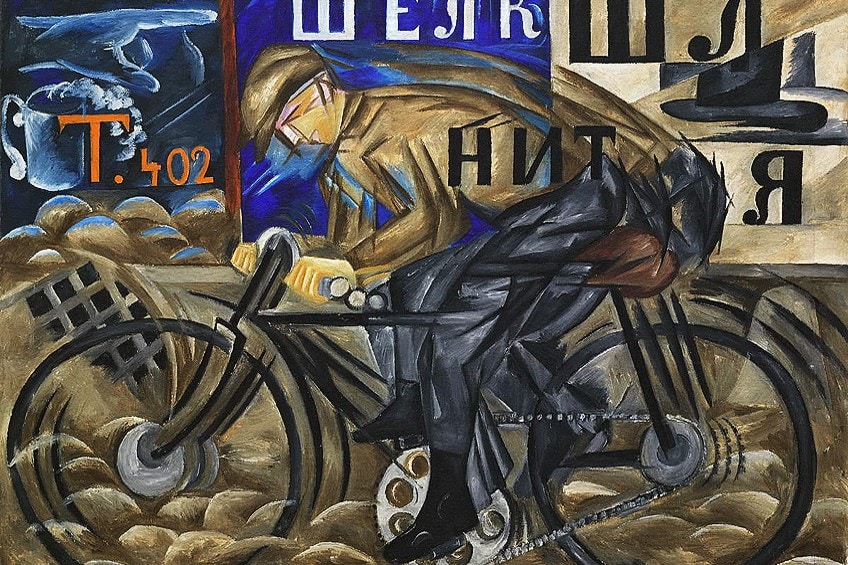Neo-Primitivism – Discover Neo-Primitivism Art and Its Main Artists
Neo-Primitivism was an art movement popular amongst the Russian Avant-Garde in the early 20th century. It was inspired by Primitivism, which was sweeping throughout Europe at the time. However, Neo-Primitivism had a distinctly Russian identity that was influenced by folk art and prehistoric artifacts belonging to the Russian Empire.
Table of Contents
What Is Neo-Primitivism? A Brief Historical Overview
“There are not and there cannot be phenomena arising from nothing”. This was said by the Ukrainian artist and art theorist Aleksander Shevchenko in his essay titled Neo-Primitivism: Its Theory, Its Possibilities, Its Achievements (1912). But what is Neo-Primitivism? Following this statement, one should first ask what Primitivism is before fully understanding the meaning behind Neo-Primitivism.
Primitivism was a trend that influenced the art of the late 19th and early 20th centuries. Many artists were embittered by the state of the modern world. They felt that industrialization and academic art practices had made the human spirit stagnant.
In search of something more spontaneous and rawer, they turned to the art and artifacts of what was deemed primitive cultures, particularly those from Africa and Oceania. This would include rock paintings, stone or wooden idols, and above all, tribal masks.

It is also worth noting that in more recent years, this notion of “uncivilized” or “primitive” cultures is regarded as ethnocentric and racially charged. Primitivism shook up the European art scene and was practiced by the likes of Paul Gauguin, Henri Matisse, and Pablo Picasso. Its Avant-Garde influence would spread to many parts of the world, including Russia. Here, it would take on new life and be adapted by Russian artists to form their own movement, which would come to be known as Neo-Primitivism.
Neo-Primitivism was an art style popular between the years of 1908 and 1913 in Russia. It was influenced by Primitivism and other European Avant-Garde art styles.
However, Neo-Primitivism artists did their best to distance themselves from their European influences, imposing a distinctly Russian identity on their artworks. They did this by using exclusively Russian subject matters and turning to their heritage for inspiration. Many Neo-Primitivism artworks include imagery of Russian peasants or the urban working class.

Some were even innovated by prehistoric Russian history, such as the mythology of the Scythians, a nomadic tribe that roamed the area before the Common Era. There were several Neo-Primitivism artists, and two stand out for their contributions to the movement. Natalya Goncharova and her partner Mikhail Larionov were each influential artists in their own right, but together they were a force in the art world. In 1910, they founded an art group called the Jack of Diamonds, sometimes referred to as the Knave of Diamonds.
This group put on exhibitions in Moscow that showcased a combination of Russian and European artworks, much of which was Neo-Primitivism art. In 1912, the couple left the Jack of Diamonds group, claiming that it had become too focused on European art. Some of the more militant artists from the group followed Goncharova and Larionov’s lead. Yet the Jack of Diamonds continued to be run by other members up until 1917.
In the same year that they left the Jack of Diamonds, the members that left formed another art group called The Donkey’s Tail. However, The Donkey’s Tail only managed to put on one exhibition in Moscow before disbanding. By this time, Neo-Primitivism was on the decline and Russian art was shifting in a more Cubo-Futurist direction.
Neo-Primitivism Art Characteristics
During the early 20th century, many countries had already become highly industrialized. In Russia, however, industrialization only really began at the end of the 19th century. This meant that it had to go through a rapid period of industrialization to try to catch up. This caused widespread dissatisfaction amongst the Russian population, which until then had been a largely agrarian society.
Depictions of Rural Life
This discontentment encouraged feelings of nostalgia for the way things were before. As a reaction, Neo-Primitivism artists began painting images of the Russian peasantry and the simple virtues of rural life. These pastoral themes would become one of the defining characteristics of Neo-Primitivism.
Although European artists, such as Paul Gauguin, were also inspired by painting peasants at this time, Neo-Primitivism artists did their best to impart their Russian identity to their artworks.
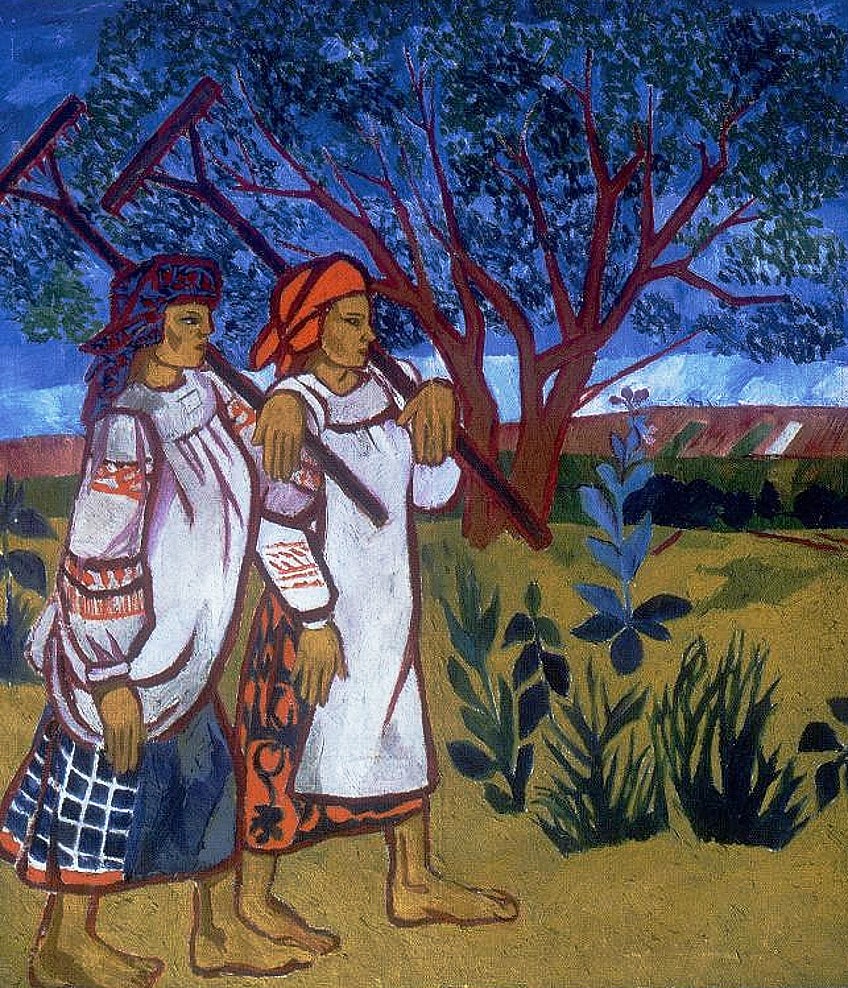
Russian Folk Art
Another one of the most common characteristics of Neo-Primitivism was the turn to Russian folk art for inspiration. Russian folk art often showcased bright, cheerful colors like reds, greens, and yellows. Floral patterns were very prominent, as well as to a lesser extent motifs including birds and strawberries. Many examples of Russian folk art also contain figures dressed in traditional Russian attire engaging in some form of folk dance.
Neo-Primitivism artworks were often inspired by Russian lubki, prints originally carved in wood but later produced using lithography.
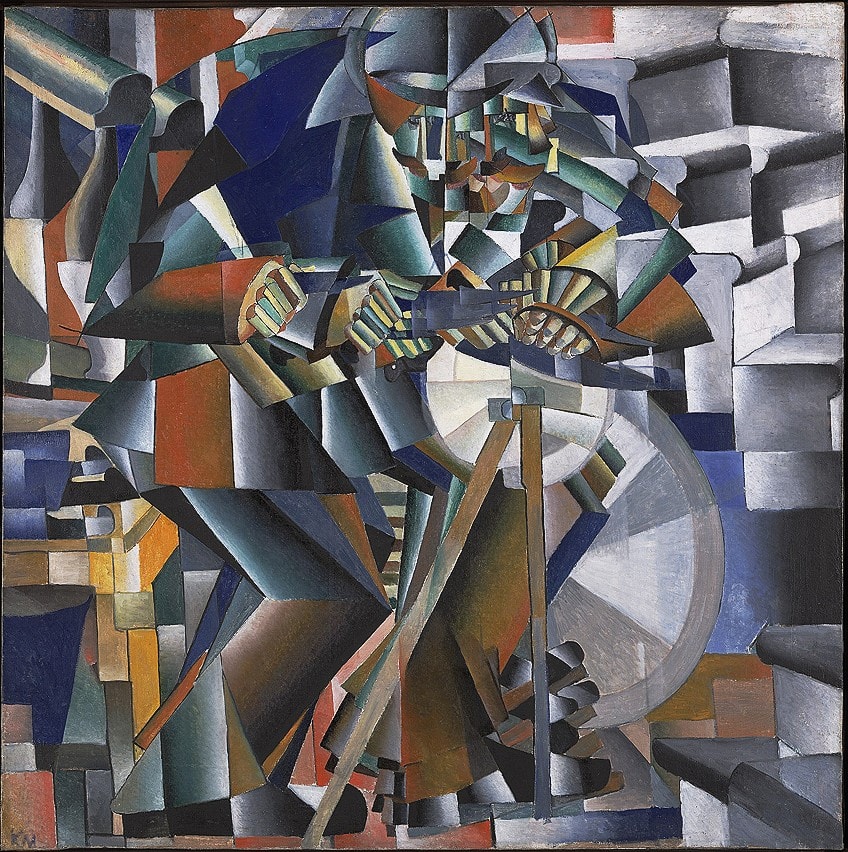
Lubki is typified by simple, bold graphics and are based upon popular stories told in Russian. These stories can range from biblical anecdotes to local folk tales. The main purpose of the lubok was entertainment, almost like a picture book that could be hung on your wall. For this reason, they were commonplace in Russian homes.
Symbolism
Neo-Primitivism artists liked to include symbolism in their artworks. Often this symbolism was quite obvious and did not require the viewer to think too deeply about its intended meaning. A clear example of this can be seen in Spring, painted by Mikhail Larionov in 1912.
The painting contains imagery that is connected with springtime, such as flowers and birds.

However, he also expresses the ideas associated with spring through a caterpillar and a butterfly, which are meant to symbolize rebirth. Images such as the figure with the shovel are evocative of the fertility associated with the season.
Crude Forms and Simple Color Schemes
Finally, one of the last characteristics of Neo-Primitivism artworks is their intentional use of rudimentary forms and simple color palettes. Although most of the artists that participated in this movement were trained, they chose to reject the techniques they were taught.
Instead, they turned to the art of children for inspiration.

They believed that academic art had stifled their creativity and wished to return to a childlike state of spontaneity and intuition. Thus, they made use of flat, unsophisticated forms and bold primary colors to emulate the art created by children.
Neo-Primitivism Artists and Artworks
During the early 20th century many trained Russian artists began experimenting with more contemporary art styles, such as Neo-Primitivism. They were inspired by primitive artworks like many other artists in Europe at the time. However, they chose to look closer to home and explore primitive art from Russia and the Orient rather than Africa and the like. Here are just a few of the artists who made a profound impact on the Neo-Primitivism movement.
Kazimir Malevich (1879 – 1935)
Kazimir Malevich was a Ukrainian-born artist of Polish descent. He was an active member of the Russian Avant-Garde, causing a great deal of controversy with his works. Although he experimented with a wide variety of different art styles, many of his paintings carried traces of elements typical of Neo-Primitivism.
Malevich grew up in the Ukrainian countryside, moving frequently between the small villages there. Due to his rural surroundings, there were not many examples of cultivated art around him. Thus, his main interactions with art were with the traditional folk art that was used to decorate housing and furniture, or embroidered on tapestries.
He would carry this love and appreciation of folk art with him throughout his career. Examples of this can be seen in paintings such as “Triumph of Heaven” (1907), which combines elements of folk art with religious imagery.

Malevich eventually moved to Moscow seeking more stimulus and formal training. It was here that he met many other famous Neo-Primitivism artists. In 1912, he participated in exhibitions with The Jack of Diamonds and The Donkey’s Tail art groups. However, after butting heads with founding member Mikhail Larionov, Malevich left in favor of the Futurist group Youth Union.
After having worked on the set design for the Cubo-Futurist theatre production of “Victory Over the Sun”, Malevich became more experimental. In 1915, he developed his own Avant-Garde art style, which he named Suprematism.
Suprematism utilized limited color schemes and geometric forms to create paintings based upon the artist’s feelings rather than observations. The most famous of these is his painting The Black Square (1915), a singular black square on a white background. Malevich stated that the black square represented a divine being whilst the white represented oblivion.

In 1930, Malevich was incarcerated for three months for producing supposedly anti-Soviet artwork. This caused him to turn back to his themes of Neo-Primitivist folk art, however with a more Suprematist slant. This can be seen in artworks such as Peasants (1930), in which two faceless figures are meant to symbolize Malevich’s fears around the changing political state of the Soviet Union. Similar paintings, which combine Neo-Primitivism subject matter with Suprematist techniques include Mower (1930), Woman with Rake (1932), and Red House (1932).
Malevich died of cancer in 1935. One of his dying requests was that he be laid to rest in Nemchinovka. Thus, his ashes were buried in a field there. Nikolai Suetin, artist and friend of Malevich, created a memorial to mark his burial place. It consisted of a black square painted on a white cube, to commemorate his famous painting The Black Square (1915).
During World War II, this memorial was destroyed. However, in recent years other memorials have been erected in Nemchinovka to honor the artist.
Natalya Goncharova (1881 – 1962)
Natalya Goncharova was one of the most controversial artists of her time. Today, however, she is known as a Russian icon. Goncharova trained at the School of Painting, Sculpture, and Architecture in Moscow. It is here that she met her life partner, Mikhail Larionov, and developed her love of painting. She originally studied sculpture under Sergei Volnukhin and Paolo Troubetzkoy. However, Larionov pointed out that she ‘had an eye for color’ and should rather pursue painting. This started a row between the couple, which caused them to separate for the first time since their meeting.
During the three days that they were apart, Goncharova took Larionov’s words to heart and experimented with painting. She discovered she had a real talent and passion for it and never turned back.
Although she continued to study painting at the School of Painting, Sculpture, and Architecture she felt it very limiting and attended private classes held by artists in their studios. At this time, women were not afforded the same rights as men.

As a woman, Goncharova was only allowed to study female nudes and would not receive a diploma upon graduation like her male counterparts. In 1910, she was expelled from the school for her contemporary style. This did not hinder her career at all. Goncharova’s paintings often contained subject matter of a spiritual nature. This can be seen in paintings such as Virgin and Child (1911). However, the Russian Orthodox Church condemned Goncharova.
They did not approve that she was living with her partner out of wedlock, often wore men’s clothing, and participated in performances in which she was topless, her breasts covered only by painted flowers.
However, her spiritual imagery was not limited to Christian themes alone. She also enjoyed painting Russian pagan icons, as can be seen in Fertility God (c. 1910). Goncharova often produced paintings depicting Jewish people. This was meant to send not only a spiritual message but also a political one. During this period, Russian Jewish people were a persecuted minority group.
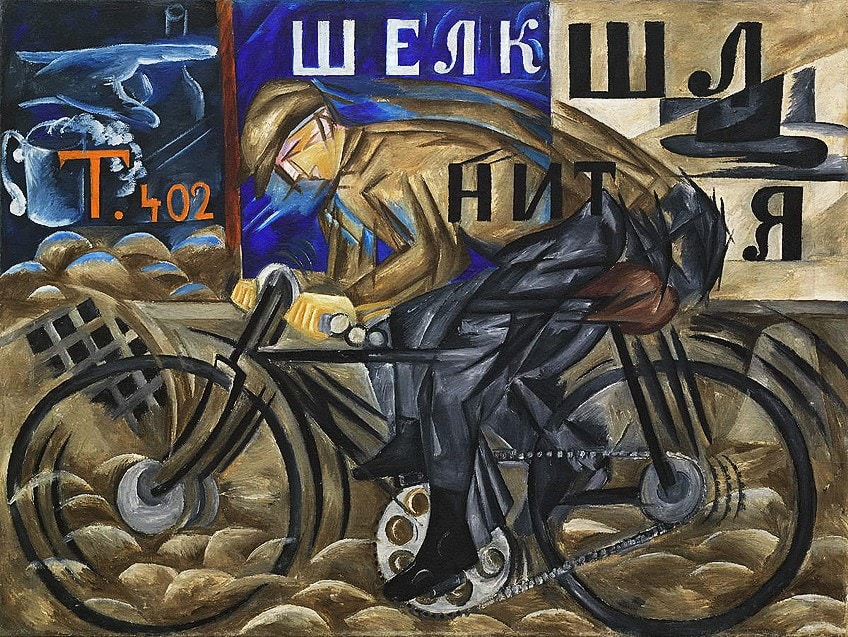
Goncharova was vocally against the mistreatment they received and often tried to portray them in a kinder light in her paintings. In her 1912 painting Rabbi with Cat, she draws parallels between Judaism and Christianity by displaying the rabbi with his cat in the typical style of the Madonna and child. Later in her career, Goncharova participated in several other artistic mediums.
She was asked by Sergei Diaghilev to design costumes and sets for the famous Ballet Russes. She found great artistic gratification in this and went on to design clothing for Maison Myrbor and other famous French designers. However, she continued to paint until her passing in 1962.
Mikhail Larionov (1881 – 1964)
Mikhail Larionov was just as influential as his partner Goncharova. Larionov studied at the School of Painting, Sculpture, and Architecture under the acclaimed painters Isaac Levitan and Valentin Serov. At the beginning of his career, he primarily painted in the Impressionist art style. However, as time passed his work became more contemporary and his beliefs became more radical. This resulted in many suspensions from the school.
During the early 1900s, Larionov’s paintings were almost exclusively works of Neo-Primitivism. He was heavily influenced by Russian folk art and often modeled his paintings around it. Some of the clearest examples of this can be seen in his works such as “Winter” (1912) and “Spring” (1912).
Another painting of his that was clearly influenced by the principles of Russian folk art was Venus and Michael (1912). Larionov also enjoyed drawing influence from traditional Russian signs, which can be seen in paintings such as Soldier on Horse (1911) and Officer’s Hairdresser (1908).

After having made major contributions to Neo-Primitivism art, Larionov developed his own form of Avant-Garde art called Rayonism. Rayonism was centered around painting everyday objects as if they were made up of rays of light. Along with Goncharova, he produced many works of Rayonism art, receiving international fame for his unique contributions to the art world. Some of his most famous Rayonism paintings include Glass (1912), Bull’s Head (1913), and Sunny Day (c. 1914).
At the outbreak of World War I, he was drafted into the Russian armed forces. However, it was not long before Larionov was badly injured in the conflict. He spent a prolonged period in the hospital recovering from his injuries. Once he was healthy enough to be discharged, he was decommissioned from the army and able to return to his art.
In the meantime, his artworks had grown in popularity. He was recruited, alongside Goncharova, to design and create sets for Diaghilev’s Ballet Russes. It was here that he discovered a talent for choreography, as well as took a liking to ballerinas.

Larionov and Goncharova had an open relationship, and although they both had multiple love affairs, always remained a family unit and artistic partners. Eventually, Larionov’s lover Alexandra Tomilina moved in with the couple when they were living in Paris. Many of his paintings such as Reclining Nude (1930) feature Tomilina. Mistresses were not uncommon in French culture and the three seemed to live in harmony. Tomilina also took over all the housework, leaving Goncharova and Larionov more time for their art.
This allowed Larionov to explore other artistic outlets such as creating puppets for famous Russian puppet theaters. He also wrote, directed, and created the stage for his own libretto. Larionov suffered from health complications from around 1946, which had been brought on by the tough wartime living conditions. His poor health slowed his art career down dramatically. To protect their joint estate, Larionov and Goncharova married in 1955.
A year following Goncharova’s passing in 1962, Larionov married Tomilina. When he died in 1964, Tomilina was left heiress to all of his and Goncharova’s assets. His dying wish was that she take all of their art back to Russia.
David Burliuk (1882 – 1967)
David Burliuk was a Ukrainian artist, writer, and poet that became an integral member of the Neo-Primitivism art movement. He studied at many renowned art schools around Europe, including the Royal Academy, in Munich and the School of Painting, Sculpture, and Architecture, in Moscow. It was in Moscow that his penchant for Neo-Primitivism first began.
In 1907, Burliuk met Mikhail Larionov another artist heavily involved in the Neo-Primitivism art movement. They quickly developed a friendship due to their similar beliefs and joint appreciation for folk art and prehistoric Russian artifacts. Burliuk invited Larionov, along with other artists involved in the movement, to stay with him and his family at their home in Chernianka.
The artists all took advantage of the creative space and produced an abundance of artworks while there. It was also during the course of this stay that Burliuk’s work took on a more Avant-Garde nature.
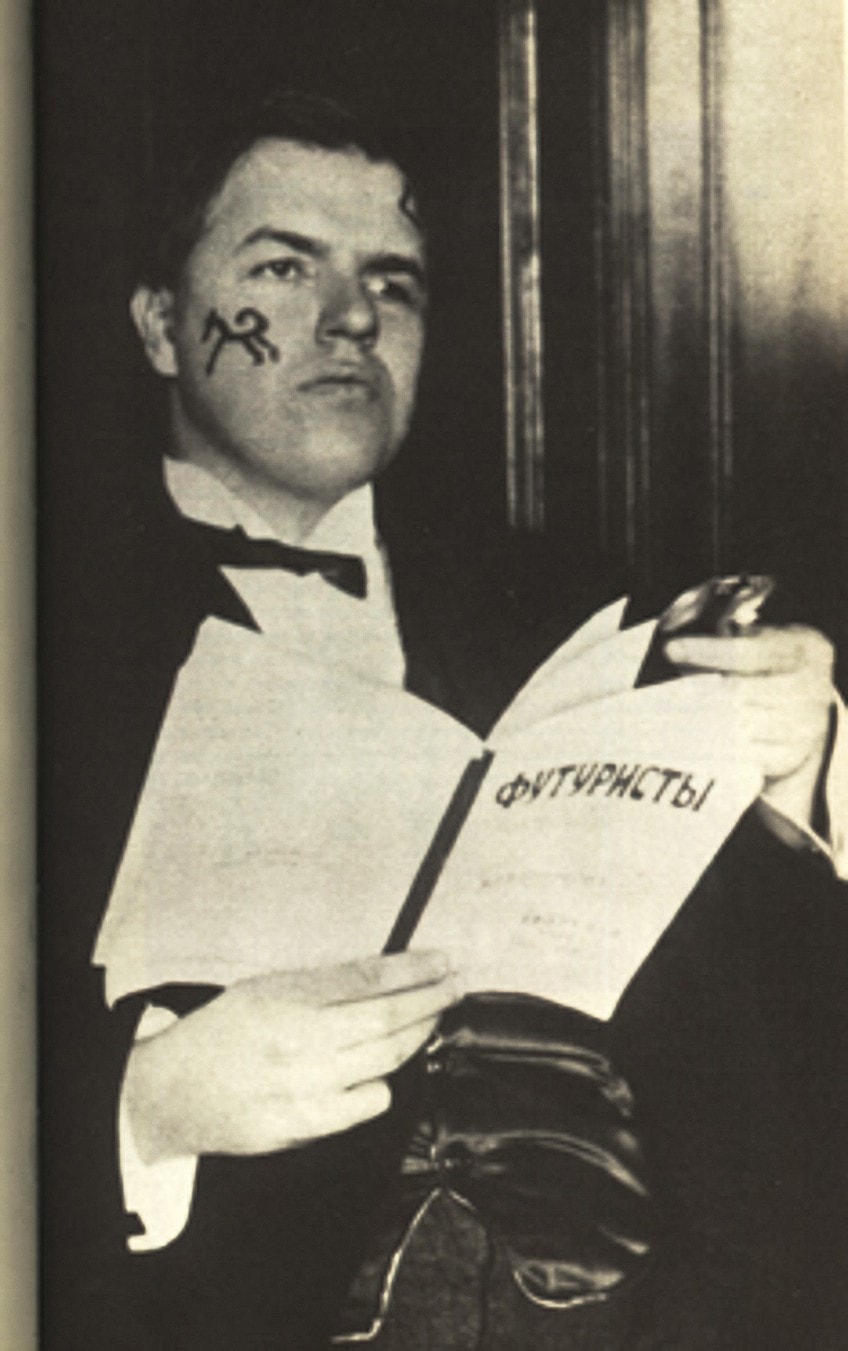
Chernianka was the sight of many Scythian ruins and excavation sights. Living in this area inspired Burliuk’s father to study ancient Scythian culture. This meant that David, and his brother Wladimir, who was also an artist, had in-depth knowledge of the Scythian way of life. This became clear through both of their artworks. David, in particular, utilized many of the characteristics of Scythian art in his own paintings.
Scythian art often lacked a fixed orientation, meaning that the different elements of the image did not have to be in alignment. This characteristic can be seen in Burliuk’s artworks, such as his print Peasant and Horses (1913). In Peasant and Horses, a man, facing the right way up, is accompanied by two horses, which are both tilted at a 90-degree angle to him.
Other elements of Scythian characteristics, which Burliuk used in his art included the isolation of animals, in which only their distinguishing features were portrayed, and transformation, in which one figure emerged from another.
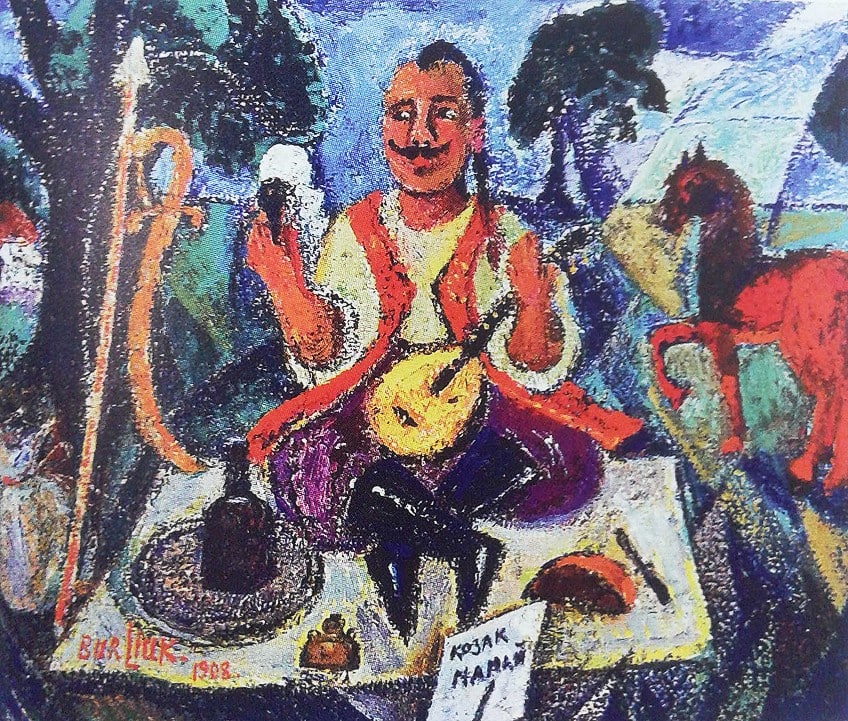
Burliuk was not only inspired by prehistoric art, but also by Russian folk art. Like many artists of the Neo-Primitivism movement, he often turned to traditional signs, as well as lubki for stimulus. This can be seen in his rudimentary black and white prints, such as A Trap for Judges (1913), Archer (1915), and Raging Parnassus (1918).
He also followed a more common Neo-Primitivism style, in which he used bright colors, bold brushstrokes, and caricature-like figures, to depict peasants at work. This can be seen in paintings such as “Peasant and Horse” (1910), “In the Paddy Fields” (1921), and “In a Russian Village” (1926).
In 1916, Wladimir Burliuk was drafted to join the Russian army, to fight in World War I. A year later, he was killed in battle. As he was very close to his brother, this pushed David to leave Russia and start making his way to the United States. However, it would take him five years to get there as he traveled through Asia and Canada, finally settling in the States in 1922. It was here that he lived until he died in 1967. His house and studio still stand in Hampton Bay, Long Island.
Marc Chagall (1887-1985)
Marc Chagall was a French-Belarusian artist that popularized the Neo-Primitivism art movement. His contributions were unique and highly impactful, which is why he is still highly celebrated today. At the time of his death in 1985, he was said to be one of the last remaining masters of European Modernism. Whilst he did explore other art movements, his work always carried signature characteristics of Neo-Primitivism.
Chagall grew up in a poor, traditional Hasidic Jewish home near the city of Vitebsk. His parents worked hard to provide for their children, with his mother selling homegrown vegetables and his father working for a fish merchant.
Fish can be seen in many of his works, such as “The Blue Fish” (1957), to pay homage to his father. At first, his parents did not want him to study art, thinking it impractical, but after seeing his passion and talent for painting they relented.

In 1906, seeing Chagall’s aptitude for art, the realist painter Yehuda Pen offered to teach him to paint for free. However, Chagall quickly learned that academic painting was not for him. Thus, he decided to move to St Petersburg to seek out more contemporary schooling. During this time, Russia was rife with anti-Semitism. Chagall had to obtain a temporary visa to reside in St Petersburg, even though Belarus belonged to the Russian Empire at that moment in time. He remained there for two years, taking in the Russian art scene, before traveling to France.
Whilst in France, he never strayed from painting Russian subject matter in the Neo-Primitivist style. He did, however, learn new techniques with which to paint his folkloric scenes, such as gouache painting.
Missing his home, many of his paintings, such as Over Vitebsk (1913), Vitebsk, Village Scene (1917), and Over the Town (1918) feature Vitebsk. His most well-known of these, and one of his most famous artworks was The Village, and I (1911). In 1923, he would go on to found Vitebsk Art College, which would become an acclaimed art institute.
Following the Russian Revolutions, Chagall moved to France permanently with his wife and child in search of a better life. They were very happy there and became naturalized as French citizens. However, anti-Semitic laws became more and more pronounced before the lead-up to World War II. In 1940, France was taken over by Nazi troops. The Chagall’s French citizenship was stripped from them and they were almost one of the many Jewish families sent off to the concentration camps. Luckily for them, Chagall’s reputation as a respected artist allowed them to be given asylum in the United States.
Chagall did not speak any English upon arriving in the States. Thus, he spent most of his time on the Lower East Side, and other areas of New York with a large Jewish population. His Jewish culture had always been an integral part of his artwork, and whilst the Holocaust took place it was more important to him than ever. He wished to immortalize his dying traditions through his art. This, along with his folk art-inspired style, is clearly evident in paintings such as Le Mort (1924), White Crucifixion (1938), and Song of David (1958).
By the time of his death, Chagall was an internationally renowned artist. His signature simple but effective use of color led artists such as Picasso to sing his praises.
In 1963, he was commissioned to paint the ceiling of the Paris Opéra. At first, many French citizens were upset that a foreigner was commissioned to paint a historic French landmark. However, after seeing his whimsical folk art and beautiful use of color it was widely agreed that there was no better artist for the job than Chagall.
The Neo-Primitivism art movement was revolutionary in its time. It utilized many techniques not explored up until that moment. Some of the most famous artists in Russian history participated in it and used it to express the love they had for their country and heritage. Although this article only explored five of the more popular Neo-Primitivism artists there were many more who also enriched the art world. If you enjoyed reading about Neo-Primitivism, we encourage you to search further.
Frequently Asked Questions
What Is an Example of Neo-Primitivism Art?
Gardening (1908) by Natalya Goncharova is a perfect example of Neo-Primitivism art. Goncharova really captures the essence of the movement in this painting. From the peasant subject matter to the flat forms and bold colors, this painting exemplifies Neo-Primitivism art.
What Are the Main Characteristics of Neo-Primitivism?
Neo-Primitivism art is easy to distinguish from other art movements when you know what to look for. Firstly, the subject matter is always of Russian origin, with typical themes being the peasantry and rural life. Next, Neo-Primitivism artworks generally make use of rudimentary or childlike forms. They also often pay no mind to the principles of gravity or orientation. Finally, they use bold, simple color schemes.

Emma completed her Bachelor’s Degree in International Studies at the University of Stellenbosch. She majored in French, Political Science, and History. She graduated cum laude with a Postgraduate Diploma in Intercultural Communication. However, with all of these diverse interests, she became confused about what occupation to pursue. While exploring career options Emma interned at a nonprofit organization as a social media manager and content creator. This confirmed what she had always known deep down, that writing was her true passion.
Growing up, Emma was exposed to the world of art at an early age thanks to her artist father. As she grew older her interests in art and history collided and she spent hours pouring over artists’ biographies and books about art movements. Primitivism, Art Nouveau, and Surrealism are some of her favorite art movements. By joining the Art in Context team, she has set foot on a career path that has allowed her to explore all of her interests in a creative and dynamic way.
Learn more about the Art in Context Team.
Cite this Article
Emma, Littleton, “Neo-Primitivism – Discover Neo-Primitivism Art and Its Main Artists.” Art in Context. May 20, 2022. URL: https://artincontext.org/neo-primitivism/
Littleton, E. (2022, 20 May). Neo-Primitivism – Discover Neo-Primitivism Art and Its Main Artists. Art in Context. https://artincontext.org/neo-primitivism/
Littleton, Emma. “Neo-Primitivism – Discover Neo-Primitivism Art and Its Main Artists.” Art in Context, May 20, 2022. https://artincontext.org/neo-primitivism/.


